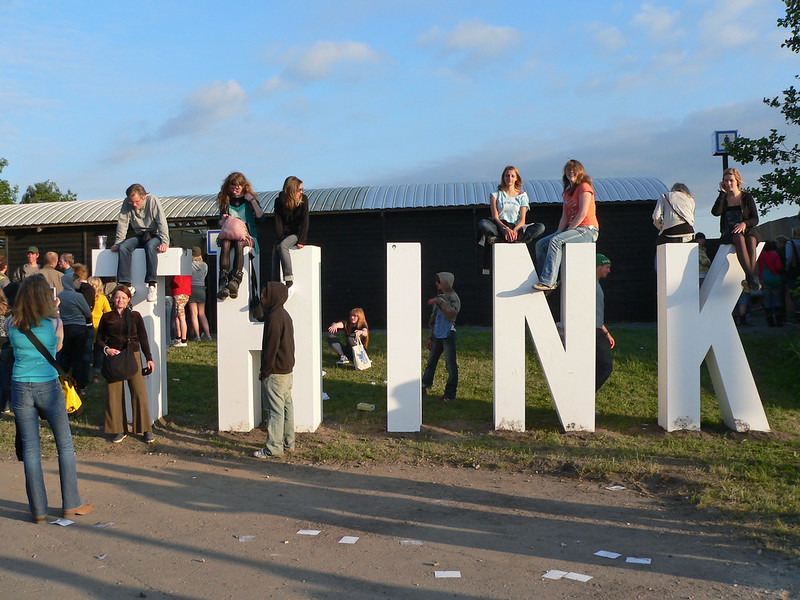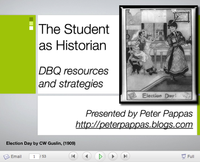I’ve been thinking about the educational implications of passage in Tom Friedman’s recent editorial The Start Up of You. Here Friedman quotes a comment made to him by LinkedIn’s founder, Reid Hoffman.
“The old paradigm of climb up a stable career ladder is dead and gone,” he [Hoffman] said to me. “No career is a sure thing anymore. The uncertain, rapidly changing conditions in which entrepreneurs start companies is what it’s now like for all of us fashioning a career. Therefore you should approach career strategy the same way an entrepreneur approaches starting a business.”
So does that mean we’re supposed to prepare our students to become hi-tech startup entrepreneurs? I don’t think that’s realistic, or wise. But I do think that it should remind us that we need to craft learning environments that ask students to increasingly take responsibility for their learning – products, process and evaluation – and the type of deeper thinking and reflection called for in the Common Core standards.
“I want kids behaving like a journalist, like a scientist… not just studying it, but being like it.” ~ Larry Rosenstock, High Tech High
Unfortunately, most of our students get a steady diet of force-fed information and test taking strategies. We’re giving a generation of kids practice for predictable, routine procedures – and that happens across the “bell curve” from AP test prep to meeting minimal proficiency on NCLB-mandated tests.
If LinkedIn’s Hoffman is correct, it makes you wonder how our students are getting prepared for “uncertain, rapidly changing conditions?” School mission statements claim to foster “life-long learning,” but walk in most classrooms and you’ll see students hard at work on a task that’s been scripted by their teacher. Most likely they’re working to replicate a final product that’s already been prescribed (with rubrics) by their teacher.
If students are going to be productive in a dynamic society and workplace they will need to be agile, fluid learners. Students that are encouraged to explore their own approaches and reflect on their progress. Students who can work collaboratively with their peers to plan, implement and evaluate projects of their own design. As Larry Rosenstock of High Tech High put it, “I want kids behaving like a journalist, like a scientist… not just studying it, but being like it.”
Every summer, teachers get to re-invent themselves – to rethink their instructional approach. Here’s your essential question for the coming school year – “How can I stop scaffolding every task for students, and have the courage to be less helpful?” Does this seem like a crazy idea? Asking student to “figure it out themselves,” when every time you’ve given an assignment, you’ve been bombarded with trivial questions like, “… How long does it have to be? … What’s it supposed to look like?”
I think students have been taught that they work for the teacher and the grade. I’ll bet the most “what it supposed to look like” questions come from the “best” students who have learned that their averages are based on faithfully executing assigned work.
For a more on the benefits of “figuring it out for themselves” see my posts Don’t Teach Them Facts – Let Student Discover Patterns or The Four Negotiables of Student Centered Learning
So be courageous – remember, the same students who seem to be unable to function independently in school are highly motivated by the uncertainty of video game. You can retrain them to “figure it out” at school, as well.
Looking for a few practical ways to start? Here’s four ideas from “Student-Directed Learning Comes of Age: Teachers Adopt Classroom Strategies to Help Students Monitor Their Own Learning” by Dave Saltman in Harvard Education Letter, July/August 2011 [Summary courtesy of The Marshall Memo – a valuable weekly round-up of important ideas and research in K-12 education]
Moving Students Toward Directing Their Own Learning
“An insistent drumbeat of research findings, as well as newly adopted curriculum standards, continues to sound out a message to educators that the work of learning must be shifted from teachers to the ones doing the learning,” says teacher/writer Dave Saltman in this Harvard Education Letter article. “That’s because research and anecdotal evidence suggest that when students manage their own learning, they become more invested in their own academic success.” Saltman describes four approaches that develop self-direction:
Continue reading “Teachers, Have the Courage to be Less Helpful”









